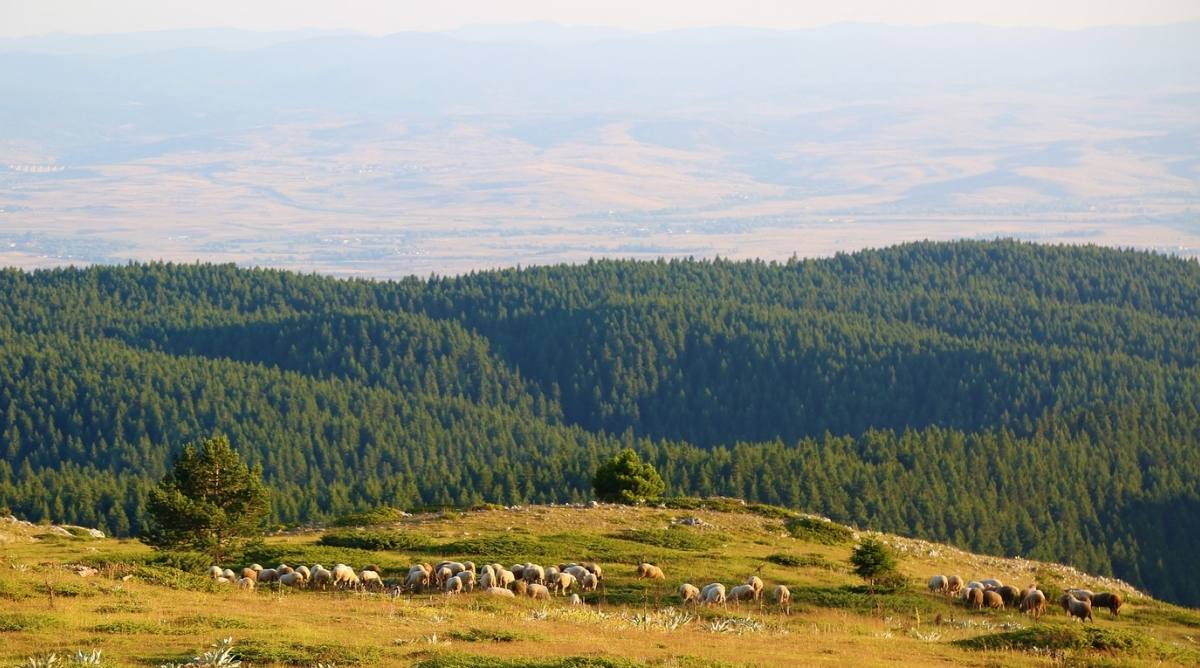California Red Sheep are known for two things: their striking red coloring, and their ability to lamb year-around. This dual-purpose breed is easy-to-handle and popular for both its gentle nature and its out-of-season breeding abilities.
Table of Contents
Origin of California Red Sheep
The California Red sheep is a medium-sized breed originating in California in the 1970s.
The breed’s origin began when Dr. Glenn Spurlock of California experimented with crossing Barbados and Tunis sheep. The resulting crossbreed was further developed by Aime and Paulette Soulier of Winters, California into what we know today as the California Red Sheep Breed.
Characteristics of California Red Sheep
| Characteristics | Description |
| Origin | California, United States |
| Appearance | Red as lambs, and a more beige color as they mature. Rams often have a mane of red hair. California Red sheep have long, droopy, floppy ears and open faces. Both ewes and rams are polled (hornless). |
| Wool | Silk-like. Sought-after by both weavers and hand spinners. Fiber fineness of 25-35 microns. Staple length 3-6 inches. Wool yield averages 50%. Lamb fleece is cinnamon red, while mature fleece is oatmeal-colored. |
| Weight | 200-250 pounds (Rams). 110-140 pounds (Ewes). |
| Meat | Tender and full of flavor. Low fat content. |
| Environment | California and similar climates, as well as regions with harsher climates like Canada, Idaho, and Colorado. |
| Common uses | Wool production. Meat production. Milk production. |
| Fertility | California Red sheep ewes can lamb out-of-season and year-round. Multiple births are not uncommon. |
California Red sheep are red as lambs, and begin to turn a more beige color as they mature. The reddish tinge remains on the legs and head. Rams often have a mane of red hair.
California Red sheep have long, droopy, floppy ears and open faces. The underbelly and udder region is open and free of wool covering, making it easy for the lambs to suckle. Both ewes and rams are polled (hornless).
The nature of California Red sheep is docile and gentle. They are easy to handle. Both rams and ewes are muscular.
The California Red sheep is used for both meat production and wool production. It is also known for its milk production.
Fertility
Unlike most breeds, California Red sheep ewes can lamb out-of-season and year-round. This makes the breed attractive for farmers and breeders.
The mothering instincts of California Red Sheep are phenomenal. It is not out of the ordinary for yearlings to birth twins. As the sheep grows in age, so does the instance of twin births or multiple births.
The California Red breed of sheep is prone to a bacterial infection that leads to infertility in the rams. The infection is called Ovine Brucellosis.
Uses for California Red Sheep Wool
California Red sheep wool is velvety in texture and high quality.
The look and feel is uniquely silk-like, and is sought-after by both weavers and hand spinners.
Fiber fineness measures around 25-35 microns. Staple length ranges from 3 to 6 inches. The wool yield averages 50%. Lamb fleece is cinnamon red, while mature fleece is more the color of oatmeal.
California Red Sheep Meat Production
California Red Sheep produce meat that is tender and full of flavor.
A few characteristics of California Red Sheep make them an attractive choice for farmers and breeders:
- Low fat content
- High-quality meat
- Ability to breed out-of-season and year-round
Mature rams weigh anything between 200 and 250 pounds. Ewe weights are around 110 to 140 pounds.
What Environments Are Best for the California Red Sheep?
Climates like California are where the California Red Sheep thrive.
However, they have also been farmed successfully in regions where the weather is harsher. This includes regions like Canada, Idaho, and Colorado to name only a few.

